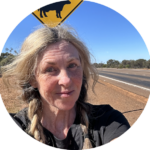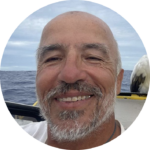World Record Polar Explorer and Researcher
"Just keep getting out the tent"
In the year 2000, Felicity travelled to Antarctica for the first time with the British Antarctic Survey as a meteorologist. Aged 23, she spent a continuous period of two and a half years (including two consecutive winters) at Rothera Research Station on the Antarctic Peninsula to monitor climate and ozone levels.
Felicity went on to organise and lead numerous expeditions to remote places around the world, particularly to the polar regions. Her expeditions have included the first British women’s crossing of Greenland, a 6,000 km drive to the South Pole, a 36,000 km drive to the Pole of Cold, and leading international teams of women on ski expeditions to both the North and South Poles.
Felicity divides her time between her home in Iceland and her native UK. She is currently undertaking research investigating airborne microplastic deposited on Arctic Ocean sea ice based at the National Oceanography Centre and the University of Southampton.
🥇 First woman to ski alone across Antarctica
🇦🇶 Lived on Antarctica for 2 years
🎖️ Has been awarded the Polar Medal
🇮🇸 Now lives in Iceland
🏃♀️ Completed the Marathon des Sables
B.I.G. - 'Before It's Gone' North Pole Expeditions
Arctic 🧊
Nov. 2021 - ongoing
The B.I.G. Expeditions are not about ‘conquering’ the landscape or setting records. Its aim is to undertake a series of ski journeys across different terrains within the Arctic region, collecting as much information as possible.
To date, four ski expeditions have been made by B.I.G. Expedition teams.
The first expedition of the B.I.G. project took place in November 2021. A team of six, led by Felicity, traveled to the infamous Vatnajökull in southern Iceland. Vatnajökull is Europe’s largest glacier and sits atop a volcano that last erupted in 2010 and is still steaming. The glacier is known for its wild weather, and it did not disappoint—the team was tent-bound in storms and wind for much of the expedition. Primarily a training exercise, the experience taught the team to trust in their equipment and each other. It also enabled rigorous testing of the science methodology and sampling routine, which resulted in several tweaks and amendments.
The next expedition saw the team in Svalbard in April 2022. They made a ski journey from Barentsburg to Moifjordur and back towards Longyearbyen, taking samples from sea ice in two separate fjords as well as other data from several locations in between. Expecting to be challenged by the cold, the team instead faced the new reality of polar travel—unexpectedly warm weather and even rain. They returned with 80 kg of samples in their sledges.
The following year, the team returned to Iceland, but this time they traveled to Drangajökull, the northernmost glacier in the country and located just a little south of the Arctic Circle. This is a remote and rarely visited glacier, but it was of the right size to enable the team to make a complete traverse of the glacier via its three summits, collecting data at regular intervals along the way. Once again, the Icelandic weather provided plenty of challenges, and it was not only the cold but also the unexpectedly warm conditions at times that created problems. An almost complete lack of snow in the access valleys to the glacier was particularly notable and problematic.
Greenland Sailing Expedition
Greenland 🇬🇱
2021
Six strong women come together for an epic voyage across one of the roughest seas on earth
The all-female team of professional athletes, sailors, scientists, and storytellers set out to challenge perceptions, break stigmas, and test newly innovated materials created from captured CO2 while gathering hard facts on the ever-changing climate and pollution of the Arctic. The team set sail this August, unassisted, from Iceland through the world’s most remote and extreme weather systems to attend the Extreme E rally in Kangerlussuaq, Greenland. Using advanced technologies, Team UMIAQ will be collecting new data on climate change and microplastics in areas that have never before been accessed by boat—accessible only now due to the melting of sea ice.
The personal journeys of the crew members, captured in this film, will bring to life the enormity of climate change. Through one extraordinary team member, this film will also highlight the importance of adaptability and flexibility—‘ability is a state of mind, not a state of body’—and provide insights for all of us to navigate our uncertain, rapidly changing world. Navigating challenging environments is possible, and the team will create dialogue around the planet and resilience, showcasing that exploration is a collective effort and that together we can create meaningful change.
Kaspersky - One Trans Antarctica
Antarctica 🇦🇶
Nov. 2011 - Jan. 2012
At the end of November 2011, Felicity set off from the Ross Ice Shelf on the Antarctic coast to ski 1,744 km (1,084 miles) across the Antarctic continent to the Ronne Ice Shelf at a spot called Hercules Inlet on the opposite coast.
Pulling two sledges loaded with 85 kg of food, stove fuel, and equipment, the journey took Felicity 59 days to complete. This made her the first woman in the world to have crossed Antarctica alone and the first person to do so using just muscle power (no kites or machines). She has been entered into the Guinness World Records.
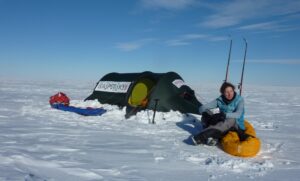
Felicity Aston
The Pole of Cold
Russia 🇷🇺
2013 - 2014
Recipients of the 6th annual Land Rover/Royal Geographical Society (with IBG) Bursary, the three-person Pole of Cold team set out from London in November 2013 to chase the onset of winter across Northern Europe and Siberia, reaching the coldest inhabited place on Earth—the Pole of Cold.
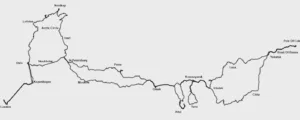
Over the next four months, the team drove the length of Norway and Finland, crossing the Arctic Circle twice, before driving the breadth of Eurasia. They returned via Altai, Tuva, Sweden, and Denmark—all in the depths of winter. In total, the team drove some 36,000 km and experienced temperatures as low as -58.9°C.
Curiosity about the day-to-day reality of life at the extremes of climate was the inspiration behind the Pole of Cold Expedition. The team aimed to focus on winter as a geographical concept by exploring the physical, cultural, and social implications of the season throughout their journey.
During the expedition, the team spent time with a variety of people, recording wide-ranging perspectives on winter, from fishermen in Norway to aurora scientists in Finland, shamans in Tuva, and reindeer nomads in Yakutia. The team also visited schools in the UK, Finland, and at the Pole of Cold, comparing responses to the question, "What does winter mean to you?"
The expedition collected a range of materials, including images, interviews, video, and sound recordings. Much of this was shared through social media and the expedition website.
On the team's return, the sounds of the expedition were paired with images and objects collected to create an exhibition called "Pole of Cold: What Does Winter Mean to You?" The exhibition opened at the Royal Geographical Society in London in May 2014 before moving to the Turner Contemporary Gallery in Kent for the winter 2014/15 season and The Historic Dockyard, Chatham for autumn 2016.
'Wettlauf zum Südpol' - Race to the South Pole
Antarctica 🇦🇶
2008
A German/Austrian TV production documented a 6,000 km drive from the coast of Antarctica to the South Pole and back in modified 4WD vehicles. Felicity joined Arctic Trucks as part of a three-person, two-vehicle mobile team that traveled through the coastal mountains of East Antarctica to the South Pole on the Antarctic Plateau.
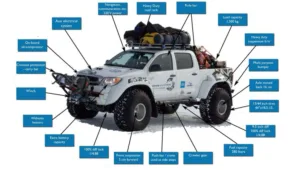
"Driving in Antarctica is a mind-bending experience. The first challenge is the mountains which line the coast of East Antarctica like a protective fence. The route through these peaks to the plateau beyond is an intricate pathway weaving around nunataks, across crevasse fields, and unnervingly high up the sides of narrow glaciers.
Once through the mountains, the new challenge is the featureless monotony of the East Antarctic ice sheet. Altitudes over 4000m, extremely low air temperatures, and high winds create a demanding environment for both vehicles and people. We drive exactly in each other's tracks to create firmer ground that is easier for the vehicles, but staring at those straight lines hour after hour is almost maddening."
Arctic Trucks is an Icelandic company that has been designing, building, and modifying 4WD vehicles for glacier travel since the 1980s. In 2010, Felicity joined a team of Arctic Trucks vehicles following a new route through the coastal mountains of East Antarctica, across some of the highest parts of the Antarctic Plateau, to the South Pole. The route was established by Arctic Trucks in 2008 and has now become a mainstay of Antarctic transportation.
The purpose of the journey was to provide logistical support, including ground transport, for an Austrian/German TV production that spent a month filming in and around the South Pole.
Crossing Lake Baikal
Russia 🇷🇺
Mar. 2008
For thirty days in March 2008, Felicity and a friend walked the 700km length of Lake Baikal in Siberia over its frozen surface.
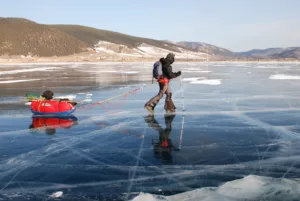
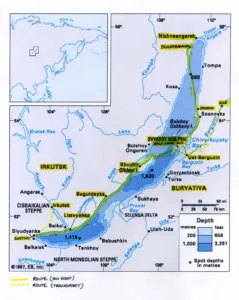
Baikal Route Crossing
Sleeping in tents on the ice and visiting villages along the lake shore, they learned about life on the lake, its place and importance in Buryat culture and the unique flora and fauna that live in the lake's waters.
Lake Baikal is the oldest and deepest lake in the world. No one has yet reached the lake bed more than 1600m down. Located in south-eastern Siberia, close to the Mongolian border, the surface of the Lake freezes during the winter months with a thick layer of beautifully transparent ice.
Long and thin in shape (it is only 80km wide in places), the lake contains a fifth of the world's fresh water. Surrounded on all sides by pristine mountain ranges, the lake's relative isolation means that it is home to more than 600 species of flora and fauna that are found no where else on Earth.
The lake is of huge spiritual and cultural significance to the local Buryat people who practise a blend of Buddhism and shamanism.
Starting in Kultuk, a large village at the very southern tip of the lake, the expedition route followed the western lake shore as far as Olkhon Gates, a dramatically narrow strait at the southern tip of Olkhon Island. From Khuzhir, the main settlement on the island we returned to the ice to walk around the islands northernmost cape, Khoboy, which is a very spiritual place for local Buryats. Rounding the cape to Uzur, we set off to cross the lake as its deepest stretch to reach the tip of the Holy Nose peninsula on Lake Baikal's eastern shore.
We spent two days in the Barguzin Valley before continuing along the east shore as far as Davsha, where we headed northwest across the lake to meet the western shore once more at Baykalskoe. We then pushed on to Severobaikalsk at the northern end of the lake where the expedition ended.
Several Polar Expeditions
Arctic 🧊
2004 - 2007
Several Expeditions to the Arctic
Kate Mardsen Expedition: Winner of the Polartec Challenge 2007 and supported by the National Geographic Expeditions Council, Felicity and National Geographic journalist, Bernice Notenboom, travelled to the Siberian republic of Sakha in the far north-east of Russia. Following the route of a British nurse, Kate Marsden, who travelled to Sakha in 1891 to search for a medicinal herb, Felicity and Bernice skied over 120km on the frozen Vilyuy River, camping on the river ice and staying in riverside huts used by local fishermen. Marsden is a national hero in Sakha and by meeting with local historians, scientists, traditional Sarkhan healers and shamans Felicity and Bernice were able to unravel many of the mysteries that surround her story.
Arctic Foxes: The first British women's team to cross the Greenland ice-sheet. The record-making expedition in 2006 involved a double crossing of Greenland's inland ice - a 1100km journey completed in 31 days.
Yippee! Timberland: Yippee! is a social group of young people with an Acquired Brain Injury (ABI) based in West Kent. In September 2005, Felicity led a team including 4 Yippee! members on an adventurous expedition to Iceland. The team overcame mobility problems, chronic fatigue and a wide range of 'hidden-disabilities' to hike across lava fields, camp in the wild, bathe in natural geothermal pools and go ice-climbing on a glacier. The expedition allowed young people with ABI to discover and explore the outdoors for themselves, returning home with a new view of the World around them and of their own capabilities. The expedition was made possible thanks to a Timberland Scholarship and the loan of two Land Rover Defenders from The Gordon Foundation.
Pink Laday Polecats Polar Challenge: The first all-female team to complete The Polar Challenge, an annual endurance race across Arctic Canada to the 1996 position of the North Magnetic Pole. Sponsored by Pink Lady Apples, the Polecats finished the race in 6th position out of a field of 16 teams.
Researches at Rothera Station
Antarctica 🇦🇶
2000 - 2002
At the age of 23, Felicity spent a continuous period of two and a half years, which included two consecutive winters, at Rothera Research Station on the Antarctic Peninsula. Her role there was to monitor climate and ozone levels.
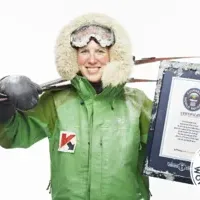
 UK • Polar Exploring
UK • Polar Exploring



 Felicity has been guest on our 'Art of Adventuring' Podcast
Felicity has been guest on our 'Art of Adventuring' Podcast